Linyu Lin
Nuclear Microreactor Control with Deep Reinforcement Learning
Mar 31, 2025Abstract:The economic feasibility of nuclear microreactors will depend on minimizing operating costs through advancements in autonomous control, especially when these microreactors are operating alongside other types of energy systems (e.g., renewable energy). This study explores the application of deep reinforcement learning (RL) for real-time drum control in microreactors, exploring performance in regard to load-following scenarios. By leveraging a point kinetics model with thermal and xenon feedback, we first establish a baseline using a single-output RL agent, then compare it against a traditional proportional-integral-derivative (PID) controller. This study demonstrates that RL controllers, including both single- and multi-agent RL (MARL) frameworks, can achieve similar or even superior load-following performance as traditional PID control across a range of load-following scenarios. In short transients, the RL agent was able to reduce the tracking error rate in comparison to PID. Over extended 300-minute load-following scenarios in which xenon feedback becomes a dominant factor, PID maintained better accuracy, but RL still remained within a 1% error margin despite being trained only on short-duration scenarios. This highlights RL's strong ability to generalize and extrapolate to longer, more complex transients, affording substantial reductions in training costs and reduced overfitting. Furthermore, when control was extended to multiple drums, MARL enabled independent drum control as well as maintained reactor symmetry constraints without sacrificing performance -- an objective that standard single-agent RL could not learn. We also found that, as increasing levels of Gaussian noise were added to the power measurements, the RL controllers were able to maintain lower error rates than PID, and to do so with less control effort.
Multistep Criticality Search and Power Shaping in Microreactors with Reinforcement Learning
Jun 22, 2024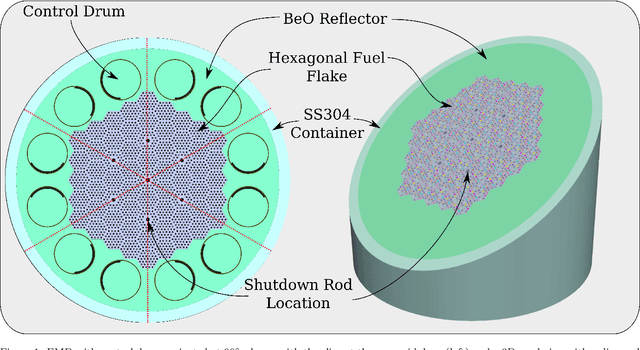
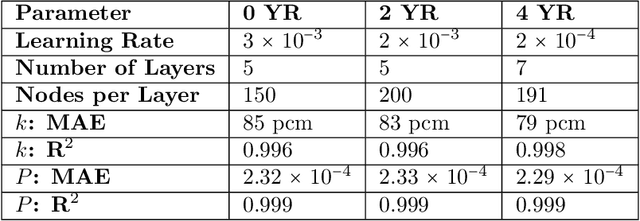
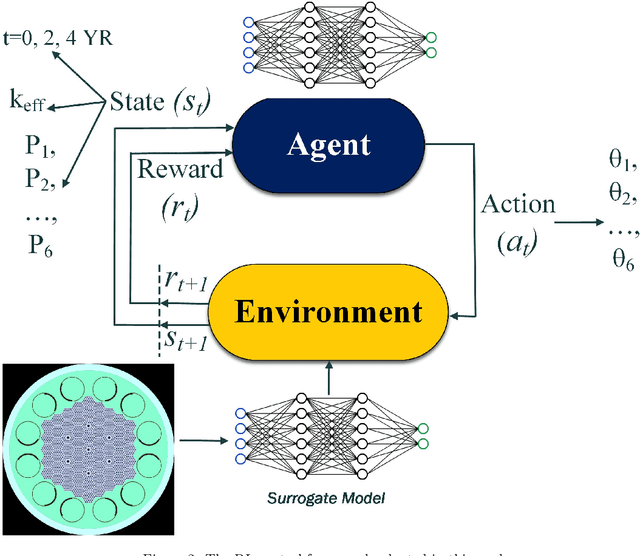

Abstract:Reducing operation and maintenance costs is a key objective for advanced reactors in general and microreactors in particular. To achieve this reduction, developing robust autonomous control algorithms is essential to ensure safe and autonomous reactor operation. Recently, artificial intelligence and machine learning algorithms, specifically reinforcement learning (RL) algorithms, have seen rapid increased application to control problems, such as plasma control in fusion tokamaks and building energy management. In this work, we introduce the use of RL for intelligent control in nuclear microreactors. The RL agent is trained using proximal policy optimization (PPO) and advantage actor-critic (A2C), cutting-edge deep RL techniques, based on a high-fidelity simulation of a microreactor design inspired by the Westinghouse eVinci\textsuperscript{TM} design. We utilized a Serpent model to generate data on drum positions, core criticality, and core power distribution for training a feedforward neural network surrogate model. This surrogate model was then used to guide a PPO and A2C control policies in determining the optimal drum position across various reactor burnup states, ensuring critical core conditions and symmetrical power distribution across all six core portions. The results demonstrate the excellent performance of PPO in identifying optimal drum positions, achieving a hextant power tilt ratio of approximately 1.002 (within the limit of $<$ 1.02) and maintaining criticality within a 10 pcm range. A2C did not provide as competitive of a performance as PPO in terms of performance metrics for all burnup steps considered in the cycle. Additionally, the results highlight the capability of well-trained RL control policies to quickly identify control actions, suggesting a promising approach for enabling real-time autonomous control through digital twins.
Advanced Transient Diagnostic with Ensemble Digital Twin Modeling
May 23, 2022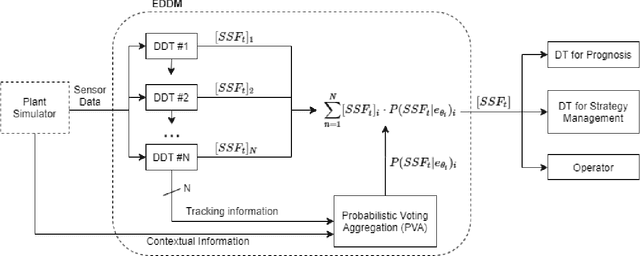



Abstract:The use of machine learning (ML) model as digital-twins for reduced-order-modeling (ROM) in lieu of system codes has grown traction over the past few years. However, due to the complex and non-linear nature of nuclear reactor transients as well as the large range of tasks required, it is infeasible for a single ML model to generalize across all tasks. In this paper, we incorporate issue specific digital-twin ML models with ensembles to enhance the prediction outcome. The ensemble also utilizes an indirect probabilistic tracking method of surrogate state variables to produce accurate predictions of unobservable safety goals. The unique method named Ensemble Diagnostic Digital-twin Modeling (EDDM) can select not only the most appropriate predictions from the incorporated diagnostic digital-twin models but can also reduce generalization error associated with training as opposed to single models.
Digital-Twin-Based Improvements to Diagnosis, Prognosis, Strategy Assessment, and Discrepancy Checking in a Nearly Autonomous Management and Control System
May 23, 2021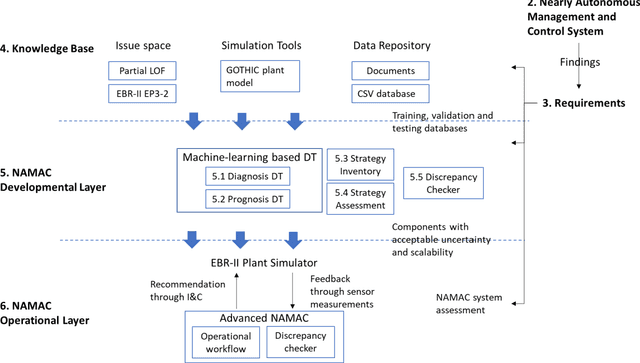
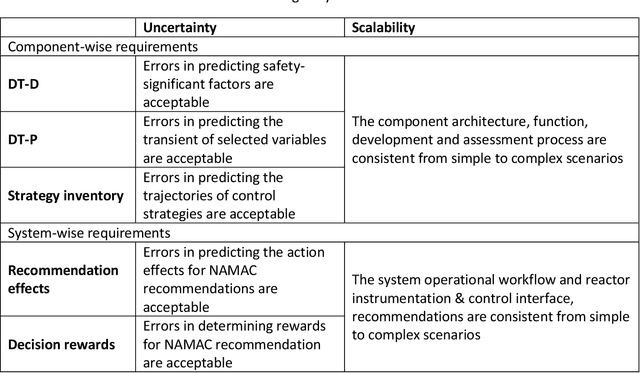
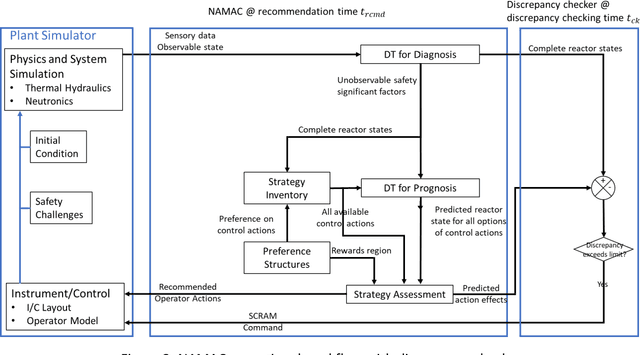

Abstract:The Nearly Autonomous Management and Control System (NAMAC) is a comprehensive control system that assists plant operations by furnishing control recommendations to operators in a broad class of situations. This study refines a NAMAC system for making reasonable recommendations during complex loss-of-flow scenarios with a validated Experimental Breeder Reactor II simulator, digital twins improved by machine-learning algorithms, a multi-attribute decision-making scheme, and a discrepancy checker for identifying unexpected recommendation effects. We assessed the performance of each NAMAC component, while we demonstrated and evaluated the capability of NAMAC in a class of loss-of-flow scenarios.
Using Deep Learning to Explore Local Physical Similarity for Global-scale Bridging in Thermal-hydraulic Simulation
Jan 06, 2020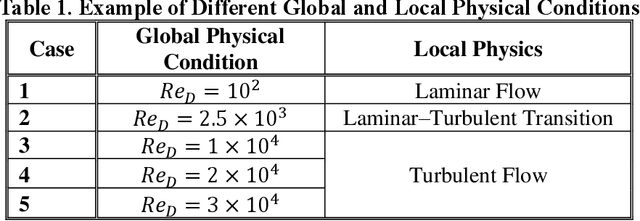


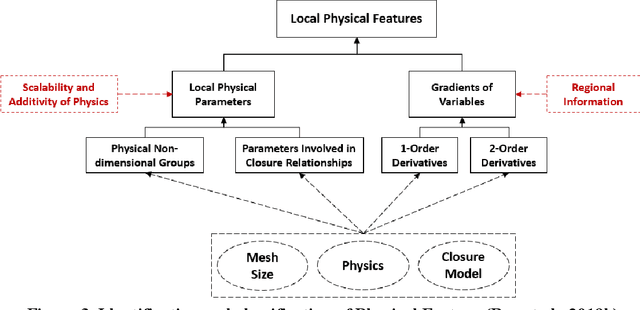
Abstract:Current system thermal-hydraulic codes have limited credibility in simulating real plant conditions, especially when the geometry and boundary conditions are extrapolated beyond the range of test facilities. This paper proposes a data-driven approach, Feature Similarity Measurement FFSM), to establish a technical basis to overcome these difficulties by exploring local patterns using machine learning. The underlying local patterns in multiscale data are represented by a set of physical features that embody the information from a physical system of interest, empirical correlations, and the effect of mesh size. After performing a limited number of high-fidelity numerical simulations and a sufficient amount of fast-running coarse-mesh simulations, an error database is built, and deep learning is applied to construct and explore the relationship between the local physical features and simulation errors. Case studies based on mixed convection have been designed for demonstrating the capability of data-driven models in bridging global scale gaps.
 Add to Chrome
Add to Chrome Add to Firefox
Add to Firefox Add to Edge
Add to Edge